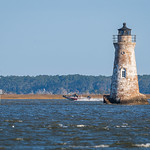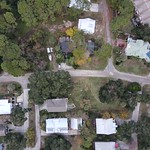COASTAL DISCOVERY MUSEUM
HILTON HEAD ISLAND, SC

The Coastal Discovery Museum is a non-profit organization located in Hilton Head Island, South Carolina. The museum is dedicated to the preservation and exploration of the Lowcountry's natural history and cultural heritage. The museum spans over 68 acres of natural and historic property, making it an ideal destination for educational tours, field trips, and family outings.
The museum features a range of exhibits and interactive displays that showcase the natural beauty and unique history of the Lowcountry. Visitors can learn about the region's wildlife, including alligators, sea turtles, and a variety of coastal birds. The museum also hosts a number of historical exhibits, including displays on the region's Gullah culture, the Civil War, and the area's early European settlers.
The Coastal Discovery Museum also offers a variety of educational programs, including guided nature walks, history tours, and workshops on topics like bird-watching and photography. The museum's grounds also feature several historic buildings, including a 19th-century schoolhouse and a restored 18th-century plantation house.
Overall, the Coastal Discovery Museum is a must-see destination for anyone interested in exploring the natural beauty and rich history of the Lowcountry.
COASTAL DISCOVERY MUSEUM is a Uncategorized or General Museum in HILTON HEAD ISLAND SC. US MID #8404500254
The museum is classed as GMU (Uncategorized or General Museums). It comes under American Alliance of Museums (AAM) region: Southeastern (Alabama, Arkansas, Florida, Georgia, Kentucky, Louisiana, Mississippi, North Carolina, South Carolina, Tennessee, Virginia, West Virginia). Total revenue from most recent IRS 990 Form: $ 928,796 from tax period 201206 (YYYYMM).
Contact COASTAL DISCOVERY MUSEUM
COASTAL DISCOVERY MUSEUM
7O HONEY HORN DRIVE
HILTON HEAD ISLAND
SC
29926
Disclaimer: please note this database is maintained by volunteers and whilst we endeavour to do our best, we cannot guarantee the accuracy of the listing.
If you notice any errors or omissions in the listing, please let us know in the comments section below.
Find more HILTON HEAD ISLAND SC Museums
What 3 Words
///detonate.defensive.consuming. Near Hilton Head, South Carolina
Map of COASTAL DISCOVERY MUSEUM
COASTAL DISCOVERY MUSEUM Information
| MID # | 8404500254 |
| Name | COASTAL DISCOVERY MUSEUM |
| Alternate Name | |
| Classification | Uncategorized or General Museums, , Southeastern |
| Federal Employer Identification Number (EIN) | 570801415 |
| NTEECC | A50 |
| Tax period of the latest return filed (YYYYMM) | 201206 |
| INCOME | 1,024,407 |
| REVENUE | 928,796 |
| LAT/LONG | 32.211921, -80.743609 |
| CODES | FIPS State Code: 45 FIPS County Code: 013 US Census Tract: 010400 US Census Block: 2002 |











